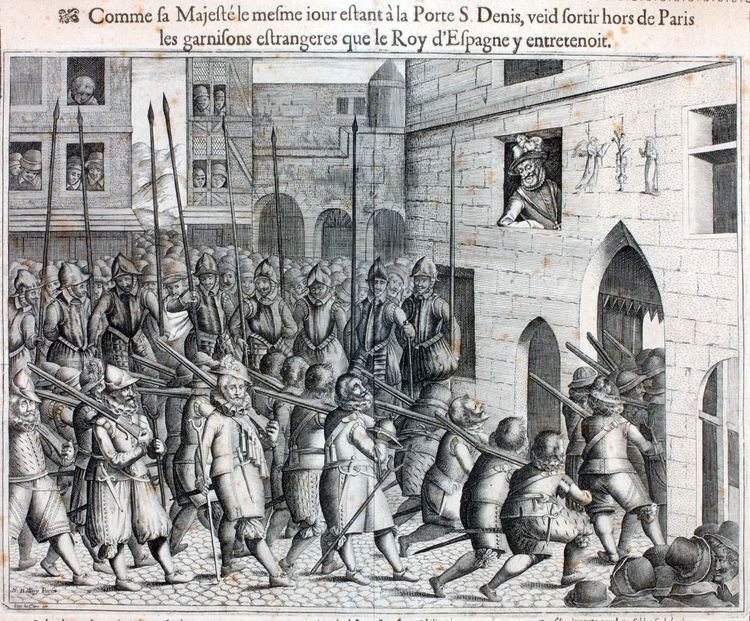 | ||
The Peace or Treaty of Vervins was signed between the representatives of Henry IV of France and Philip II of Spain, on 2 May 1598, at the small town of Vervins in Picardy, northern France, close to the territory of the Habsburg Netherlands. The terms were worked out under the auspices of the papal legate of Clement VIII, Alessandro de' Medici, the "architect of the treaty", according to Bernard Barbiche.
Henry had declared war on Spain in 1595 and after victory at the Siege of Amiens in 1597 had recently promulgated the Edict of Nantes, on 13 April the following year. The Edict and this treaty brought to an effective end the Wars of Religion in France, which had spread to a conflict European-wide. By its terms, Philip recognized the formerly Protestant Henry as King of France and withdrew his forces from French territory, depriving the remnants of the Catholic League of their support.
Philip died on 13 September, but his heir Philip III respected the terms of the treaty. Carlo Emanuele, duke of Savoy, who had held back from the treaty, was defeated by Henry IV in 1599. He signed a separate Treaty of Lyon with Henry in 1601.
The parties to the treaty were hosted by Guillemette de Coucy, co-seigneur of Vervins, in her Châteauneuf de Vervins. Close to the Spanish Netherlands, the Thiérache region had suffered much damage in the recent fighting. Its numerous 16th-century fortified churches still bear witness today.
In retrospect, some historians see this as the final defeat of Philip II, who had furthered dynastic causes through championing ultra-Catholic principles, and a sign of the long downfall of Habsburg Spain and the gradual rise in European hegemony of France during the ensuing Grand Siècle.
